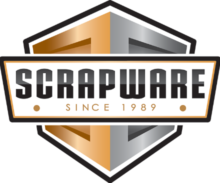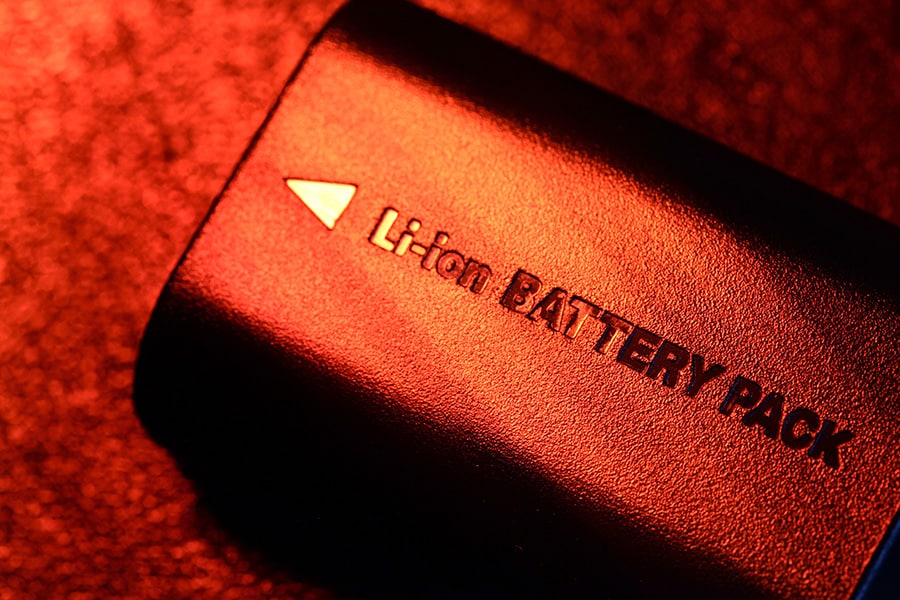The proliferation of lithium-ion batteries and the fire hazard they create are an increasing problem for the scrap metal recycling industry.
More and more products are made with lithium-ion batteries and most consumers don’t have readily available, convenient means to safely dispose of them. This means an increasing number of these batteries are finding their way into the waste stream, including scrap metal recycling yards.
January and February 2022 saw 50 reported fire incidents in the United States and Canada at waste and recycling facilities, according to Fire Rover, which is the highest number since 2016. The company, which tracks waste and recycling facility fires, reported that this is coming off the worst year for fire events in 2021. Fire Rover, which specializes in fire control technology, has stated that it believes this uptick in fire incidents is due to lithium-ion batteries improperly disposed of at waste and recycling facilities.
The nature of the scrap metal recycling industry already leaves it vulnerable to fires. A scrap yard will receive flammable materials like propane and gas tanks, paints, oil, grease, lubricants, plastics, wood, tires, and other hazardous materials that are co-mingled with recyclables. This material may end up being crushed, cut, compacted or shredded during the recycling process. Sometimes workers may not know containers still hold traces of flammable substances, piles of oil-coated metal can ignite when pressure is generated, or sparks from friction can ignite flammable materials. With the potential for fire already present in a scrap yard, when lithium-ion batteries enter this waste stream, there is an even greater potential for fires.
Lithium-ion batteries are in an increasing number of consumer goods and electronic waste.
Most people are familiar with the rechargeable batteries in their laptops, smart phones and tablets, but these small batteries are also in musical greeting cards, FitBits, smart watches, GPS devices, electronic cigarettes and earbuds, electric scooters and hoverboards. Unlike traditional alkaline batteries, lithium-ion batteries are capable of spontaneously igniting from overheating. This is because they can pack a lot of energy into a small package, having the highest energy density of any battery technology. They are able to deliver a voltage that is three times higher than other batteries. Generating all the electricity causes heat that can lead to fires or explosions when damaged through an uncontrolled chemical reaction called “thermal runaway.”
When these batteries built into a consumer product make their way into a scrap yard, they can get into a stream of metal headed to a shredder or crushed under heavy equipment moving scrap. Breaking open or crushing the battery will cause it to ignite. Once a fire has started, it can be a greater challenge to extinguish because a lithium-ion battery releases a flammable vapor that is toxic and which essentially produces its own fuel. Scrap yard fires can cost hundreds of thousands of dollars to put out and it can take days to successfully stop such a fire.
For many years, industry associations and government agencies have been offering guidance to help reduce the number of yard fires. Recognizing the magnitude of the problem, the Environmental Protection Agency (EPA) last year published “An Analysis of Lithium-Ion Battery Fires in Waste Management and Recycling.” The study summarizes the magnitude of this problem and outlines steps needed for industry and consumers to address the hazard. The Institute of Scrap Recycling Industries (ISRI) also published an electronic report last year offering guidance to help recyclers reduce the number of yard fires in general. The document, “Creating a Fire Prevention and Management Plan,” was developed by professionals in the fields of scrap recycling, fire science and insurance. It is available to anyone in the scrap recycling business.
In their press release, ISRI stated: “This guidance document provides information on how to prepare a fire prevention plan, fight incipient stage fires and to be prepared in the event of a crisis management scenario. Even if your facility has an existing plan, this is a valuable tool to help you review your operations and make any necessary improvements.” ISRI said its plan is to update this guidance annually.
Industry and insurance experts list the following things you should know about lithium battery fires:
- Such fires usually occur after a battery has been damaged causing a rupture in the membrane that separates the chemicals inside, sparking a self-perpetuating fire.
- Small lithium-ion fires can be extinguished with special extinguishers. Although they are labeled for use on metal fires, Class D fire extinguishers do not work on lithium-ion battery fires. This is because the batteries do not really contain lithium metal.
- Lithium-ion batteries are classified as a Class B flammable liquid fire, so an ABC or BC fire extinguisher would work to put it out. These fire extinguishers interrupt the chemical reaction in a lithium-ion battery to stop the fire.
- Water can also be effective in dampening lithium-ion fires because the water reduces the heat created by the chemical reaction.
- Those at risk of exposure to such fires should implement a plan with the local fire department and develop an action plan with staff.
- Maintain an automatic suppression system if you can
- Avoid parking or leaving equipment near a potential heat source.
- Install thermal sensors if possible.
- Train employees to use equipment on hand to contain fires.
- Have a working automatic sprinkler system and even manually operable roof vents to let heat escape.
- Finally, maintain good basic housekeeping, limiting dust and material buildup that could act as fuel.
Some recyclers and municipal waste facilities have invested in fire monitoring systems which remotely detect increases in heat or “thermal detection” and can also remotely deploy a cooling agent to put out fires. These companies advocate using both technology and improved processes to cut down fire risk.
In addition to industry actions to reduce fires, individuals can take steps to improve fire prevention at recycling plants.
Consumers should make sure they do not place electronics which include lithium-ion batteries in curbside recycling. Instead, take electronic waste to designated recycling facilities. Many stores like Lowes or Home Depot offer periodic collection of electronic waste. Additionally, consumers should recycle the right items in the right way, making sure bottles, cans, paper and cardboard are clean and empty. Foods and liquids should be kept out of recycling. Keep plastic bags out of recycling and make sure dangerous items like propane tanks, cans of paint and all electronics are kept out of recycling.
With increased awareness, consumers and companies can reduce fires at scrap metal recycling plants by utilizing fire protection plans, employee training, public education and investment in fire detection technologies. If both industry and individuals take action to reduce scrap yard fires, scrap metal recycling can continue to keep material out of landfills and allow for its reuse in a way that helps the environment and the economy while keeping everyone safe.
One industry expert recommended a new way to help keep lithium-ion batteries from being crushed in scrap yards: Battery manufacturers should make them brightly colored—like Day-Glow Pink—so they will easily stand out in a pile of scrap.
About ScrapWare Corporation: Since 1989, Rockville, Maryland-based ScrapWare Corporation has been the software of choice for the recycling industry. Its ease of installation and simplicity saves users time and money, while helping them achieve compliance and maintain accurate business insights. With state-of-the-art functionality that‘s tailored to each organization’s unique requirements, ScrapWare is an advanced dynamic software solution that alleviates the most pressing recycling industry worries. For more information, please call (301) 517-8500 or visit https://www.scrapware.com/.

